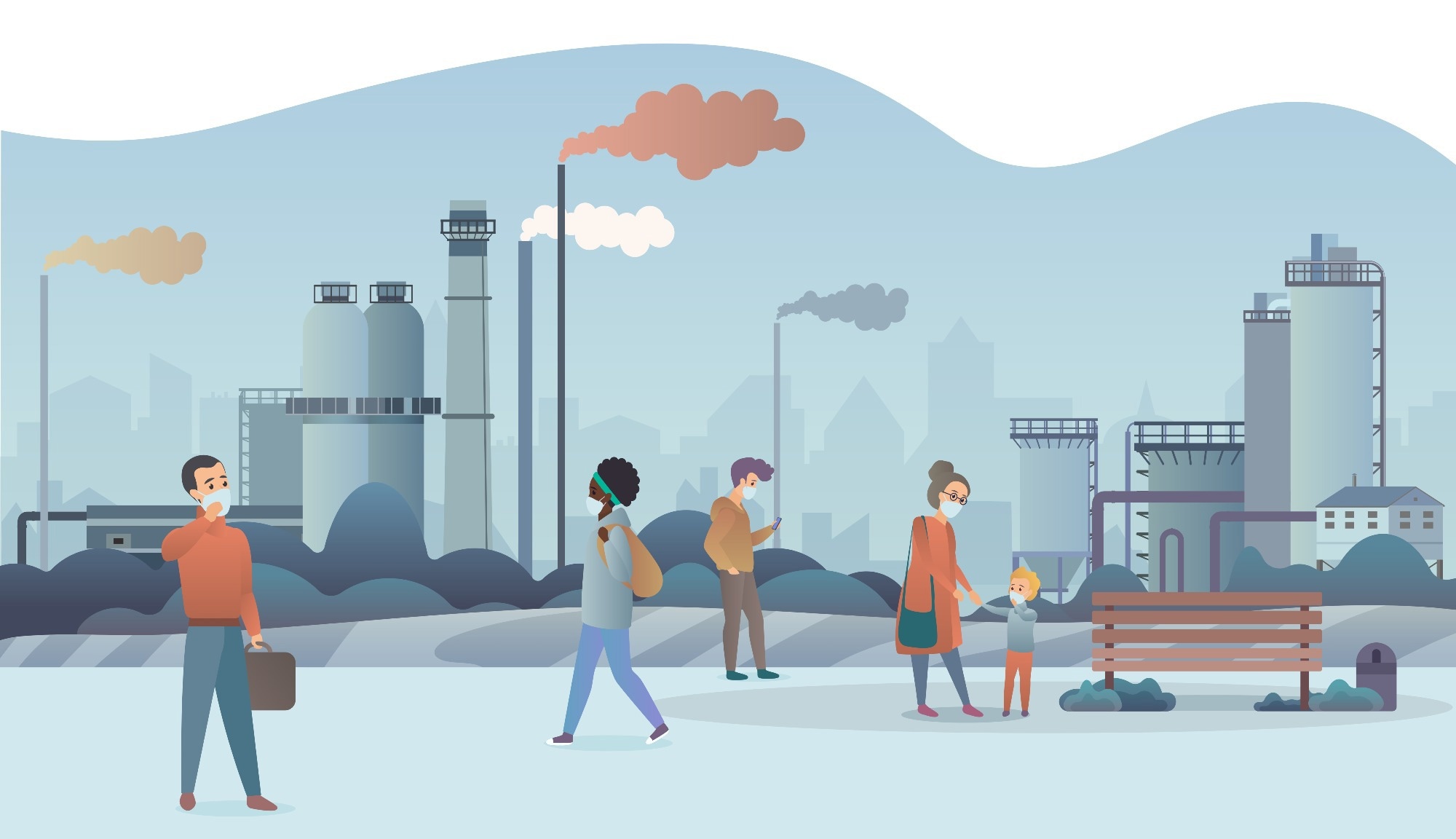A recent study published in Environmental Research examined the effects of long-term exposure to air pollutants on coronavirus disease 2019 (COVID-19) morbidity and mortality.
 Study: Long-term air pollution exposure and COVID-19 case-severity:An analysis of individual-level data from Switzerland. Image Credit: Lemberg Vector studio/Shutterstock
Study: Long-term air pollution exposure and COVID-19 case-severity:An analysis of individual-level data from Switzerland. Image Credit: Lemberg Vector studio/Shutterstock
Background
Multiple studies suggest that exposure to air pollutants could increase susceptibility to and aggravate the clinical course of COVID-19. However, most studies investigating the impact of air pollution have implemented ecological study designs. Examples include regression analyses assessing the association of air pollution with COVID-19 incidence, severity, and mortality.
A limitation of ecological regression analyses in the context of COVID-19 is that they do not account for risk factors at an individual level. The individual-level risk factors highly influence COVID-19 outcomes.
An assessment of methodological considerations for epidemiologic studies of COVID-19 and air pollution concluded that ecological investigations are subject to bias.
About the new study
In the present study, researchers evaluated whether changes in air pollution in Switzerland affected COVID-19 severity and mortality. They obtained the COVID-19 dataset corresponding to data from February 2, 2020, to April 30, 2021, from the Swiss Federal Office of Public Health. It contained individual-level data on patients’ age, smoking status, sex, gender, COVID-19 status, hospitalization, intensive care unit (ICU) admission, death, and comorbidities.
Additionally, the team collected information on socioeconomic factors, health system-related factors, and municipality-level climate data. Air pollution data for 2014 to 2019 were modeled on a European scale at a spatial resolution of 1 km2.
The team implemented a Bayesian geostatistical modeling framework that integrated data from the Swiss national observations network (NABEL), pan-European in-situ monitoring network (Eionet), high-resolution satellite-based proxies of nitrogen dioxide (NO2) and particulate matter (PM), high-resolution products on climate, meteorology, and land cover.
Socioeconomic data were accessed from the Statistical Atlas of Switzerland. The data comprised indices on population distribution, living conditions, the national language, urbanization status, economic indicators, and distribution of deaths. Additionally, the Atlas was also accessed for data on healthcare system-related factors, such as hospital capacity and the number of workers.
Only hospitalized patients were included in the analyses. Two outcomes were measured for COVID-19 severity, ICU admission, and death. Univariate analyses evaluated the associations of ICU admission and death with individual patient-level characteristics. For multivariate modeling, patients lacking information on sex and municipality were excluded. Comorbidities were categorized into groups of zero, one, two, and three or more comorbidities.
Analyses were separately performed for two temporal scales – the first COVID-19 wave (before October 2020) and the overall time series. Bayesian variable selection (BVS) was applied to identify outcomes-associated factors. The probability of NO2 and PM2.5 inclusion in multivariable models were separately assessed.
Findings
The researchers analyzed 28,540 patients hospitalized with COVID-19. Of these, 5849 required ICU admission, and 5234 succumbed to infection. Univariate associations revealed that advanced age increases the odds of ICU admission and death. Being male was also associated with higher odds of severe COVID-19. The odds of severe disease outcomes (ICU and death) increased when patients were comorbid.
There were lower odds of severity for diabetes and adiposity but higher odds for cancer and chronic renal and cardiovascular diseases. Patients without any previous illness were 70% less likely to be admitted to ICU and 80% less likely to die. Severe COVID-19 outcomes were different during the first wave of COVID-19 compared to the entire period.
The risk of ICU admission was 25.1% in the first wave compared to 20.5% overall. Similarly, the mortality risk was higher in the first wave (20.5%) than during the whole period (18.3%). BVS identified predictors associated with disease severity. Sixteen models were fitted, corresponding to the combination of two outcomes, two periods, two air pollutants (NO2 and PM2.5), and two model types (spatial and independent).
The authors noted that spatial models outperformed independent non-spatial models. The results from multivariate spatial models were similar to those from univariate analysis. Advanced age and male sex were associated with increased odds of ICU admission and death, irrespective of pollutant or temporal scale.
Higher NO2 concentrations increased the odds of both outcomes in the first wave, whereas elevated PM2.5 concentrations only increased the risk of death. The authors noted that the magnitude of pollution-related regression coefficients was lower than that of individual risk factors.
In the first wave, higher air temperature decreased the risk of both outcomes, and the odds of ICU admission increased in municipalities where five or more people lived in a household.
Conclusions
In summary, the findings demonstrated that exposure to air pollutants was associated with COVID-19 severity only during the first wave of the pandemic when the national health system was less prepared.
Notably, individual-level characteristics were significant factors related to (severe) outcomes in all models. Overall, the findings help improve our understanding of the impact of exposure to air pollutants on COVID-19 morbidity and mortality.